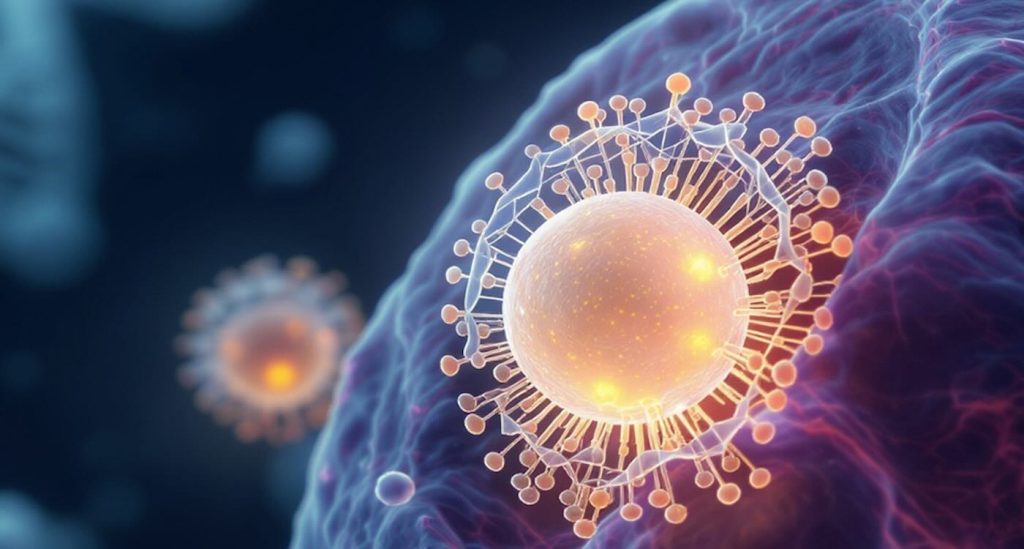In a remarkable breakthrough, scientists at Northwestern University have unveiled innovative nanostructures that dramatically enhance CRISPR’s ability to treat genetic diseases by tripling its efficiency in cell entry. This story unfolds the potential of scientific ingenuity to change lives, delivering hope for revolutionary treatments.
In the heart of Chicago, researchers are lighting a path toward a healthier future. Led by chemist Chad A. Mirkin, a team at Northwestern University has made strides in genetic medicine that could transform lives. Their focus? Improving how CRISPR, a tool poised to rewrite the genetic code, can effectively target and treat diseases.
CRISPR alone can’t accomplish much without an effective delivery method. Think of it as a groundbreaking surgical tool needing a reliable vehicle to get to the operation site. Enter the new creation: lipid nanoparticle spherical nucleic acids, or LNP-SNAs. These tiny, ingenious structures carry all the necessary CRISPR components—like Cas9 enzymes—wrapped in a protective DNA shell that guides them expertly through the body.
What’s impressive is the performance boost they provide. In lab tests involving various human and animal cells, these LNP-SNAs displayed an astonishing ability to enter cells—up to three times more effectively than traditional methods, typically used in vaccines. Not only did they tackle the delivery challenge with finesse, but they also reduced toxicity and enhanced gene-editing efficiency significantly.
Mirkin’s team reported that these new nanostructures improved the success rate of specific DNA repairs by over 60% compared to previous techniques. It’s a striking reminder that sometimes, the design and structure of a tool can be just as important as its ingredients.
“CRISPR is an incredible tool that has the potential to fix genetic defects and eliminate diseases,” Mirkin explained. Yet he candidly admitted that the challenge lies in the delivery: “Getting CRISPR to the right cells is nothing short of a miracle.”
Unlike traditional delivery methods that sometimes use viral vectors, which may cause unwanted side effects, the LNP-SNAs promise a safer option. They are designed to ensure that more of the CRISPR components can access their intended destination without triggering a harmful immune response.
The magic becomes apparent when we look closer at how these spherical nucleic acids function. They shape themselves into a globular form, surrounding a core that can be packed with CRISPR’s vital tools, facilitating their entry into cells. This design paves the way for targeted delivery, making it easier for cells to absorb and utilize the CRISPR technology.
Empowering Change
As the team conducted their experiments with various types of cells—including skin, white blood, and kidney cells—they meticulously tracked how well the new delivery system worked. Each measure indicated a triumphant success in delivering CRISPR and enabling precise gene modifications.
With these promising results in hand, Mirkin and his team are eager to continue their research, seeking to validate their findings in real-world disease models. Their work, which could soon move into clinical trials, brings a wave of optimism for the future of medicine.
“CRISPR has the potential to revolutionize the medical field,” Mirkin stated, highlighting the importance of effective delivery alongside groundbreaking genetics. By merging CRISPR with their innovative SNAs, they’re not just making incremental improvements; they’re embarking on a journey that might unveil new frontiers in the treatment of diseases.
As more discoveries unfold in this exciting field, the hope is that these advances spark change for countless individuals fighting genetic disorders, proving that with persistence and creativity, a brighter tomorrow is always within reach.
SHARE THIS INSPIRING CRISPR DEVELOPMENT with your friends on social media!
If you would like to see similar good news stories click here & Share this to brighten someone’s day.





